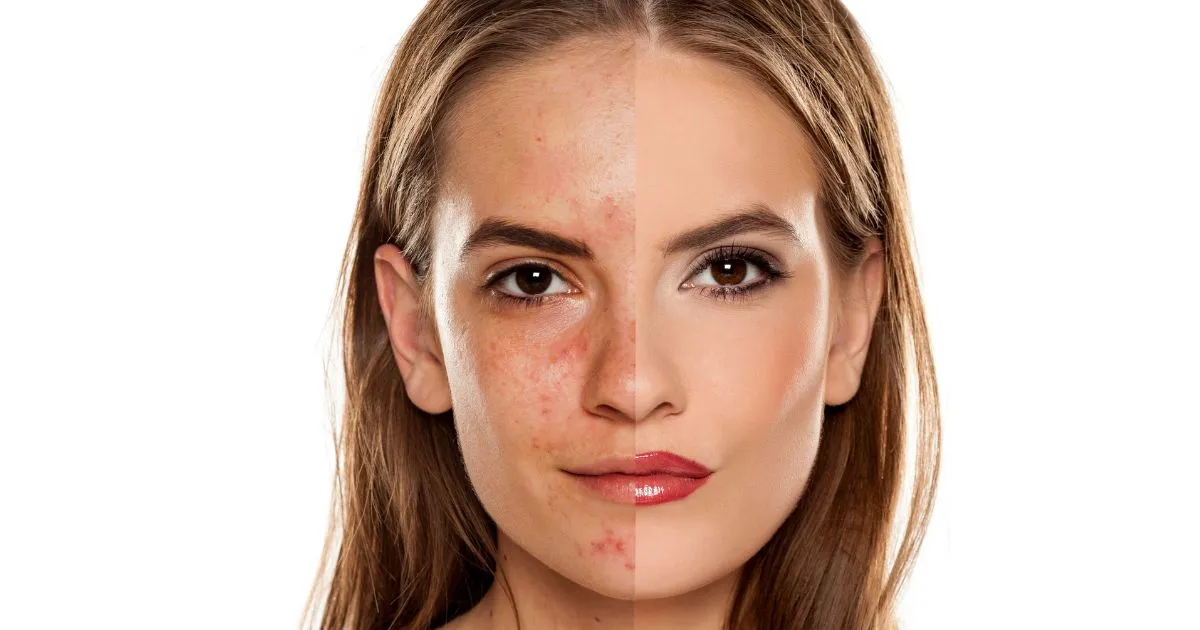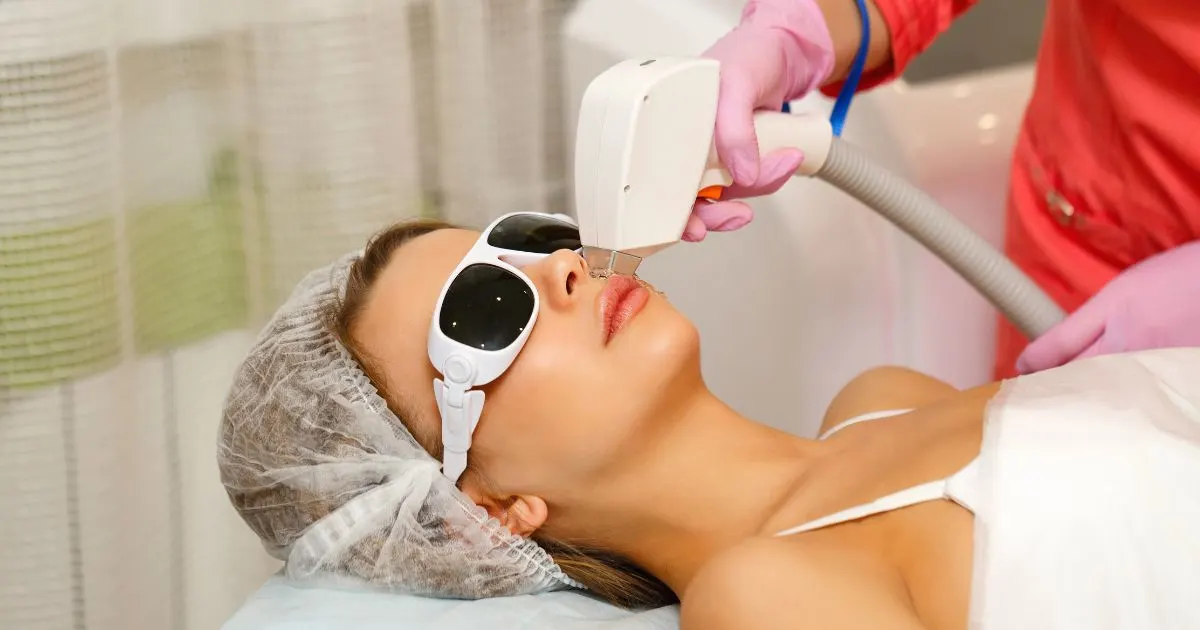Table of Contents
Fine lines and wrinkles form over time from repeated facial movements, but modern injectables offer an effective solution. Botox and Dysport are leading treatments that smooth expression lines and rejuvenate your appearance.
While both share the same active ingredient, their formulation and performance differ slightly. This guide helps you understand the differences between the two and how neurotoxin treatments in Lee’s Summit, MO, at Skin Fit Medical Spa can help you achieve natural, youthful results.
Understanding Botox and Dysport
Both Botox and Dysport belong to a class of injectables known as neuromodulators. These treatments temporarily relax the muscles that cause wrinkles when you smile, frown, or squint.
By limiting the muscle’s movement, the skin above it smooths out, creating a refreshed and more youthful look.
Botox, manufactured by Allergan, is the original and most recognized brand of botulinum toxin type A. It has been used safely for decades to treat both cosmetic and medical concerns.
Dysport, developed by Galderma, contains the same active ingredient. However, it comes with a slightly different protein structure. This feature leads to variations in diffusion and dosage requirements.
Both treatments are FDA-approved for aesthetic use and are popular options for clients seeking Botox vs Dysport for wrinkles, frown lines, and crow’s feet.
How These Injectables Work
When injected into targeted muscles, Botox and Dysport block the nerve signals responsible for muscle contractions. This temporary relaxation reduces movement in the treated area and smooths out fine lines and creases.
As such, patients can expect a softer, rejuvenated skin that still looks natural. The effects are not permanent, but consistent treatments can help train the muscles to contract less forcefully over time, leading to longer-lasting improvements.
Both injectables take only a few minutes to administer, and most patients can resume normal activities right after their session.
Comparing Botox and Dysport: Key Differences
While both products produce similar outcomes, they have distinct characteristics that influence which one might suit you best.
| Feature | Botox | Dysport |
| Molecular Size | Larger molecules, offering precision in smaller areas | Smaller molecules, allowing broader diffusion |
| Onset of Results | Results visible in 3–7 day | Results visible in 2–4 days |
| Duration | Typically lasts 3–4 months | Typically lasts 3–4 months |
| Best For | Small, specific zones like crow’s feet or lip lines | Larger treatment areas like the forehead or frown lines |
For example, patients who want a focused correction may prefer Botox vs Dysport for crow’s feet. On the other hand, those seeking softer, diffused smoothing might benefit more from Dysport for forehead lines.
Botox vs Dysport for Forehead Lines
Horizontal forehead lines form from frequent eyebrow lifting or expressions of surprise. These dynamic wrinkles can become permanent over time.
Botox vs Dysport for forehead treatments both target the frontalis muscle to relax movement and prevent deepening lines. Dysport’s smaller molecules often allow it to spread more evenly across large areas like the forehead, providing a soft and natural finish. Botox, on the other hand, offers more controlled precision, which can be beneficial for patients who prefer subtle results.
The choice between the two depends on how pronounced your lines are and your aesthetic goals.
Botox vs Dysport for Frown Lines
Frown lines, or glabellar lines, appear between the eyebrows when the corrugator and procerus muscles contract. These “11 lines” often give the face an angry or tired look.
Botox vs Dysport for frown lines are both highly effective in relaxing these muscles. Dysport may show results slightly sooner sometimes within 2 days while Botox generally takes about 5 days.
Patients who want rapid results before an event or special occasion may lean toward Dysport, while those seeking a slower onset with the same long-lasting outcome may prefer Botox.
A skilled injector can help determine the appropriate product and dosage based on facial anatomy and desired expression.
Botox vs Dysport for Crow’s Feet
Crow’s feet develop from years of smiling and squinting. Eventually, they create fine lines at the corners of the eyes. These are some of the most commonly treated areas for Botox vs Dysport for crow’s feet because of their visible impact on overall facial youthfulness.
Botox often excels here due to its controlled placement, allowing injectors to smooth lines without affecting nearby muscles that contribute to natural expressions. Dysport may diffuse more quickly, which can be helpful for individuals with broader areas of wrinkling around the eyes.
Results typically last three to four months for both injectables, with consistent follow-up treatments recommended for maintenance.
Botox vs Dysport for Wrinkles
Dynamic wrinkles form from muscle movement, while static wrinkles result from aging, sun damage, and collagen loss. Botox vs Dysport for wrinkles primarily addresses dynamic wrinkles, helping to soften lines that appear when you express emotions.
Over time, these treatments also minimize static wrinkles by reducing repetitive motion. Plus, they give skin the chance to repair itself. With regular sessions, many patients notice smoother texture and a brighter, more even tone.
These neuromodulators can be used as preventive treatments as well, delaying the onset of deeper creases for individuals in their late twenties or early thirties.
Botox vs Dysport for Hyperhidrosis
Excessive sweating, or hyperhidrosis, can significantly affect confidence and comfort. Botox vs Dysport for hyperhidrosis treatments work by blocking the nerve signals that activate sweat glands.
This approach effectively reduces sweating in areas such as the underarms, palms, feet, or scalp. The effects usually last about six months, providing relief and improving the quality of life for those who struggle with excessive perspiration.
Patients report feeling more at ease in social and professional situations, knowing they can maintain dryness even under stress or in hot conditions.
Botox vs Dysport for Masseter Reduction
Some patients develop a square or bulky jawline due to an enlarged masseter muscle from frequent teeth clenching or grinding. Botox vs Dysport for masseter reduction helps slim and contour the jawline by relaxing this muscle.
Over time, the masseter shrinks slightly, resulting in a softer, more V-shaped facial appearance. This treatment also relieves tension from jaw clenching and can reduce headaches associated with bruxism.
Patients typically notice visible changes within four weeks, with optimal results after two to three sessions spaced several months apart.
The Treatment Experience
A session with Botox or Dysport begins with a consultation to assess facial structure, expression patterns, and aesthetic goals. The injector identifies target muscles and determines the appropriate dosage.
During the procedure, a fine needle delivers small amounts of the product into specific areas. Discomfort is minimal, often described as a quick pinch. The entire process takes about 15 to 30 minutes, with no downtime afterward.
Clients can immediately return to normal routines but should avoid strenuous activity, touching the treated area, and lying down for several hours after treatment. Mild redness or swelling may occur but typically resolves within a few hours.
Results and Longevity
The results of Botox and Dysport develop gradually. Dysport may show improvement as early as 2 days, while Botox typically takes 3 to 5 days. Both reach full effect around two weeks after treatment.
Most patients enjoy results lasting three to four months, depending on metabolism and lifestyle factors. Over time, regular treatments may extend the duration of results, as the muscles adapt to reduced activity.
Many clients appreciate the subtlety of these treatments. Your friends and colleagues often may notice a fresher look without realizing an injectable was involved.
Safety and Side Effects
When administered by trained professionals, both Botox and Dysport are considered safe. Minor side effects may include slight swelling, bruising, or tenderness at the injection sites. These effects are temporary and usually fade quickly.
Severe side effects are extremely rare, but it is essential to work with experienced providers who understand facial anatomy and injection techniques. Choosing a reputable clinic ensures proper product handling and natural-looking results.
Which Treatment Is Right for You?
The choice between Botox and Dysport depends on your treatment goals, muscle strength, and desired level of diffusion. Some patients find Dysport works faster or spreads more evenly across broader areas, while others prefer the precision of Botox.
A consultation with an experienced injector is the best way to determine which product will deliver your ideal results. Factors such as facial anatomy, previous treatments, and personal preferences all influence the final recommendation.
Skin Fit Medical Spa Neurotoxin Treatments in Lee’s Summit, MO
At Skin Fit Medical Spa in Lee’s Summit, MO, clients receive exceptional care tailored to their unique goals. The clinic specializes in Neurotoxin Treatments in Lee’s Summit, MO, providing both Botox and Dysport to achieve naturally refreshed, smooth results.
Our expert team focuses on understanding each client’s concerns before developing a personalized treatment plan. Every injection is performed with precision, ensuring that results enhance your features while maintaining a natural appearance.
Refresh Your Look Now – Find Out Which Treatment Fits You.
Frequently Asked Questions
How are Botox and Dysport different from dermal fillers?
Botox and Dysport relax facial muscles to smooth wrinkles, while dermal fillers restore lost volume and contour the face.
How long do results from Botox and Dysport last?
Both treatments typically last three to four months, depending on your metabolism and treatment area.
Which works faster, Botox or Dysport?
Dysport may begin showing results within two to three days, while Botox generally takes three to five days to take effect.
Are Botox and Dysport safe?
Yes, both are FDA-approved and considered safe when administered by trained professionals.
Can Botox or Dysport help with excessive sweating?
Yes, Botox vs Dysport for hyperhidrosis effectively reduces excessive sweating by blocking overactive sweat glands.




